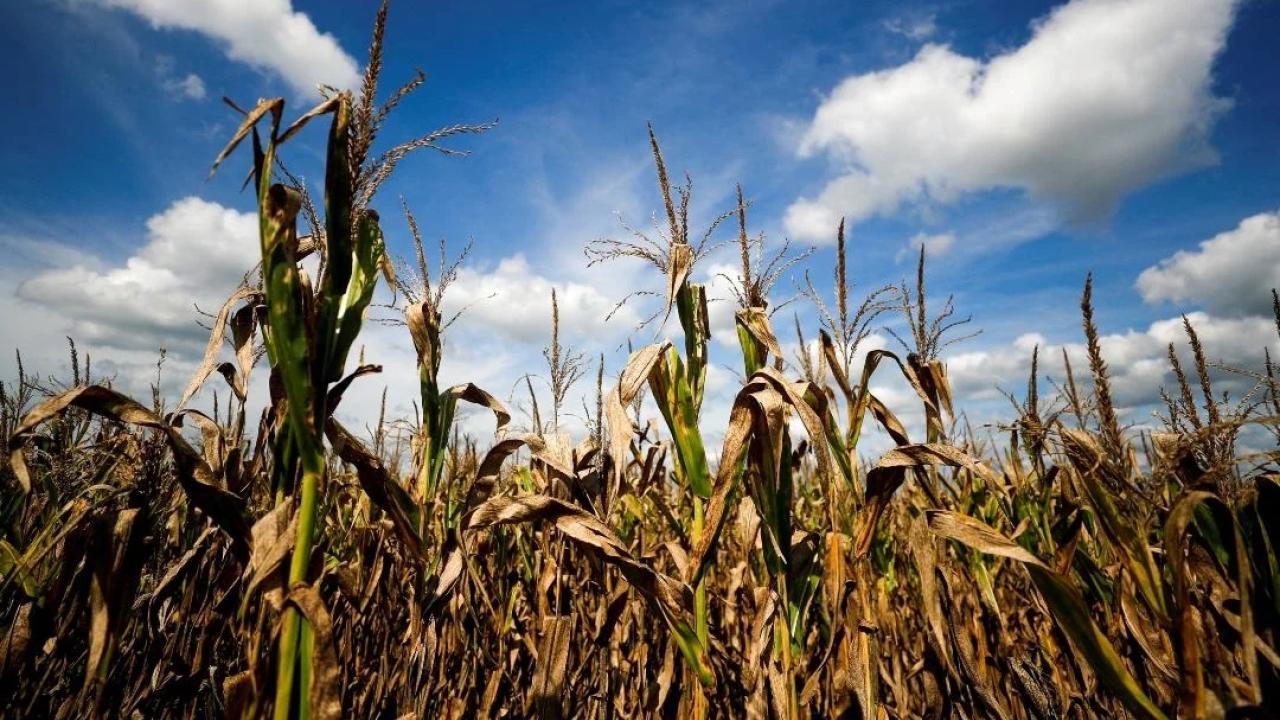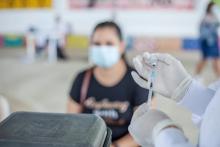
Danilo Palacios, head of the Agriculture and Livestock portfolio, also confirmed that he postponed the import of corn until he has a new report and that there is still time; if it is authorized this week, it will arrive in December.
On September 24, Ecuador's Agriculture Minister Danilo Palacios approved the import of 95,000 tons of corn in response to an alleged shortage of the product. But on October 4, corn producers said that the official postponed the process for two weeks to gather new information.
Although the Ministry of Agriculture and Livestock (MAG) assured that imports were still in place, Palacios confirmed this situation with regard to corn and also analyzed other issues that impact agriculture, such as drought and pests, in an interview with the Ecuadorian newspaper El Universo .
- Was there or was there not a postponement of the import of 95,000 tons of corn?
Based on the first information given, it was enough to authorize the import and we detected a deficit of around 150,000 tons, not 300,000 as the industry said, being very cautious in our decision we decided to authorize 95,000 tons.
The consumption of the product is 113,000 tons per month, which is not even the consumption of one month. I went to a meeting in Los Ríos, where producers told me: 'Minister, that information is wrong, there is more product.' I activated the people in the districts to do a new audit that they are delivering to me (these days).
We will act according to what the technical numbers indicate. In a first review, it is suitable for import, in a second review, when I receive it, if it is suitable for import, we will do the import.
What will happen tomorrow if we don't have the product? Who will be responsible for that, who will take care of the consumer? They will immediately point the finger at the ministry or the minister, the president or the government.
- With this information, are you going to meet with another corn advisory council?
I'm going to do it this way, because there is confusion. People say that we are defending industrialists, but in reality those who participate most in the chain are the producers of corn, pigs, chickens and eggs.
That meeting I'm planning to have beforehand is going to be with the producers. It's going to be this week. First the meeting with the producers and then the committee.
- With this postponement, if the import is approved, will the corn arrive in the time required by the industry?
We are still in time, this week if it is authorized it will arrive in the second or third week of December
- How is Ecuador doing with compliance with the European regulation on deforestation-free products that will be applied from December?
Ecuador will be the first country to be able to comply with 60% of the requirement. We are working together with private companies, with Anecacao, 30% of our products are sold to Europe and of that 30%, 60% already comply with the traceability issue.
Ecuador can handle all of that volume, that 30%, we are at the stage of finding the way, the technology to be able to verify traceability, that depends a lot on satellite photographs and georeferencing.
- Was there talk of a single registry as well?
Yes, another of the distinctions we have in the area of compliance with all these measures is that Ecuador is the only country whose Constitution, since 2016, states that all products must be produced with care for the environment, and without fear of being wrong, I believe that Ecuador is the country that is best prepared within the region to be able to comply with all these traceability issues.
- With the remaining 40% of products that would be left to complete?
The issue of being able to obtain the technology to confirm the areas that are not reforested, that all the requirements of Europe are met, of our production 80% of our products comply and what is required for Europe is not that percentage.
Now we have to think about the future, about this concern that exists today, about taking care of the environment, about seeing how we are going to feed the world.
- Ecuador is experiencing climatic complications. How has the drought affected agriculture?
It has affected us more in terms of yields; total losses in areas have not been so significant because we have not reached such serious levels.
The recent few rains have helped to reactivate these areas that we had identified as suffering from water stress. We have 100,000 hectares that are affected by this issue of water stress. Areas were also lost due to fires, but in the agricultural sector it has not been felt as much.
The issue has had more impacts on yields. We estimate that in each crop, depending on the area, there is a loss of between 20% and 40% of the yield of the crops most affected by the issue of sunlight intensity. This causes the plant to become stressed, to store reserves and not to bear fruit, which causes yields to drop.
- The banana industry has been warning of this drop in yield per bunch.
Yes, that is around 20%, we have fulfilled everything this year, luckily the price has been good, the producers have had the opportunity to fertilize and provide all the necessary care, but the weather has played against us.
- Bananas also suffer from the problem of moko. How has this affected your productivity?
We have been monitoring from Agrocalidad with drones, the latest information is that we had already evaluated around 45,000 hectares in the Los Ríos area, more or less the percentage of affectation is 8%, in the provinces of El Oro and Guayas there are small outbreaks that occur and do not go beyond 100 hectares.
The good thing about moko is that it is not like Fusarium race 4, which is not present in our country, and the area can be recovered; if we follow the protocol correctly, after four to six months it can be planted again.
- What is the area currently affected by moko?
There are 3,000 hectares in the Los Ríos area.
- Has it gone up since the last report?
Yes, last time we were talking about 500 hectares. We also have to explain something, we had not yet covered all the hectares that we have today, I think we will have the possibility of having all the information on the 70,000 hectares in the province of Los Ríos until December or before, but based on what we have, it gives us 8% of the affected area.
- And in the other provinces it was reported that moko was detected in 15 provinces?
It is minimal, in El Oro there are no more than 30 hectares; in Guayas, a 50 hectare farm, but it is not 50 hectares but x number of plants. It really has not grown by great luck in these other provinces and we have to be attentive.









